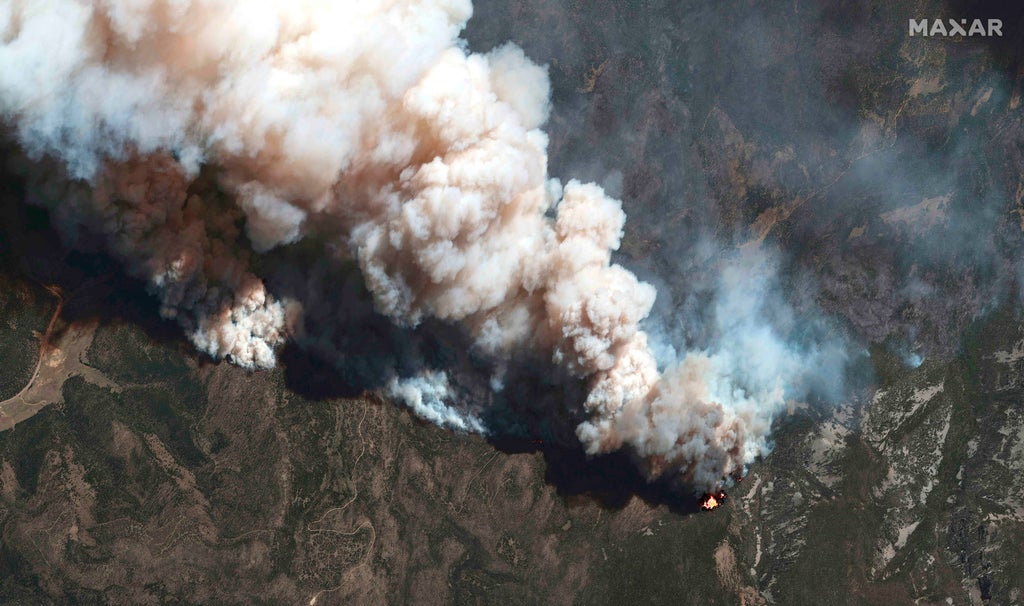
The largest wildfire in North America slowed to a near standstill in northern New Mexico Tuesday amid light rain and a bit of snow in the mountains as nearly 3,000 firefighters scrambled to get ahead of a worsening fire forecast in the days ahead.
The Memorial Day weekend historically marks the beginning of the primary wildfire season across many parts of the Southwest. But wildland blazes already have burned an area larger than the state of Delaware this year in extremely dry conditions created by lingering drought and climate change.
In Arizona, a new fire briefly forced evacuations Tuesday near Flagstaff. Authorities investigating the cause said they were looking for a person of interest near where it started a half-mile (.8 kilometer) from the Lowell Observatory.
Fire officials in New Mexico said they hoped to continue to clear flammable vegetation and deploy aircraft to douse smoldering forests on Wednesday before windier, hotter, drier conditions return into the weekend.
By Friday, "fire weather starts to enter the critical stage where we'll probably see more growth and fire moving,” Forest Service fire behavior analyst Stewart Turner said at a briefing Tuesday night.
The blaze that started about seven weeks ago in the Rocky Mountains foothills east of Santa Fe was 41% encircled by clearings and barriers that can stop a wildfire from spreading farther.
The fire has consumed more than 486 square miles (1,260 square kilometers) of timber, grassland and brush, with evacuations in place for weeks. Its perimeter stretches 634 miles (1,020 kilometers) — more than the distance between New York City and Detroit.
It's among six active large fires in the state that have burned across 536 square miles (1,388 square kilometers).
So far this year, wildland fires have burned across roughly 2,650 square miles (6,860 square kilometers) of the U.S. That's roughly twice the average burn for this time of year, according to a national center for coordinating wildfire suppression.
Jayson Coil, one of the operations chiefs in New Mexico, said the thing that will be “keeping me awake at night” are the hidden hot spots where extremely dry roots and dead logs smoldering beneath the ground can quickly burst into flames.
“You can have one of those (logs) that's stuck in a snow bank, but the wood's going to keep heat in there," he said Tuesday night.
"Once one side of them burns, it will be just like a cigar. It may take several days depending on what is around it, but the fire will creep down, stay in there and then it will pop out the other side,” he said.
A wildfire on the outskirts of Los Alamos National Laboratory was 85% contained Tuesday. In the vicinity, Bandelier National Monument is preparing to reopen some areas to visitors Friday.
In southwestern New Mexico, a fire was burning through portions of the Gila National Forest and outlying areas.
Stricter campfire and smoking restrictions will take effect Wednesday or Thursday in all six national forests in Arizona because of the heightened fire threat, Forest Service officials said Tuesday.







